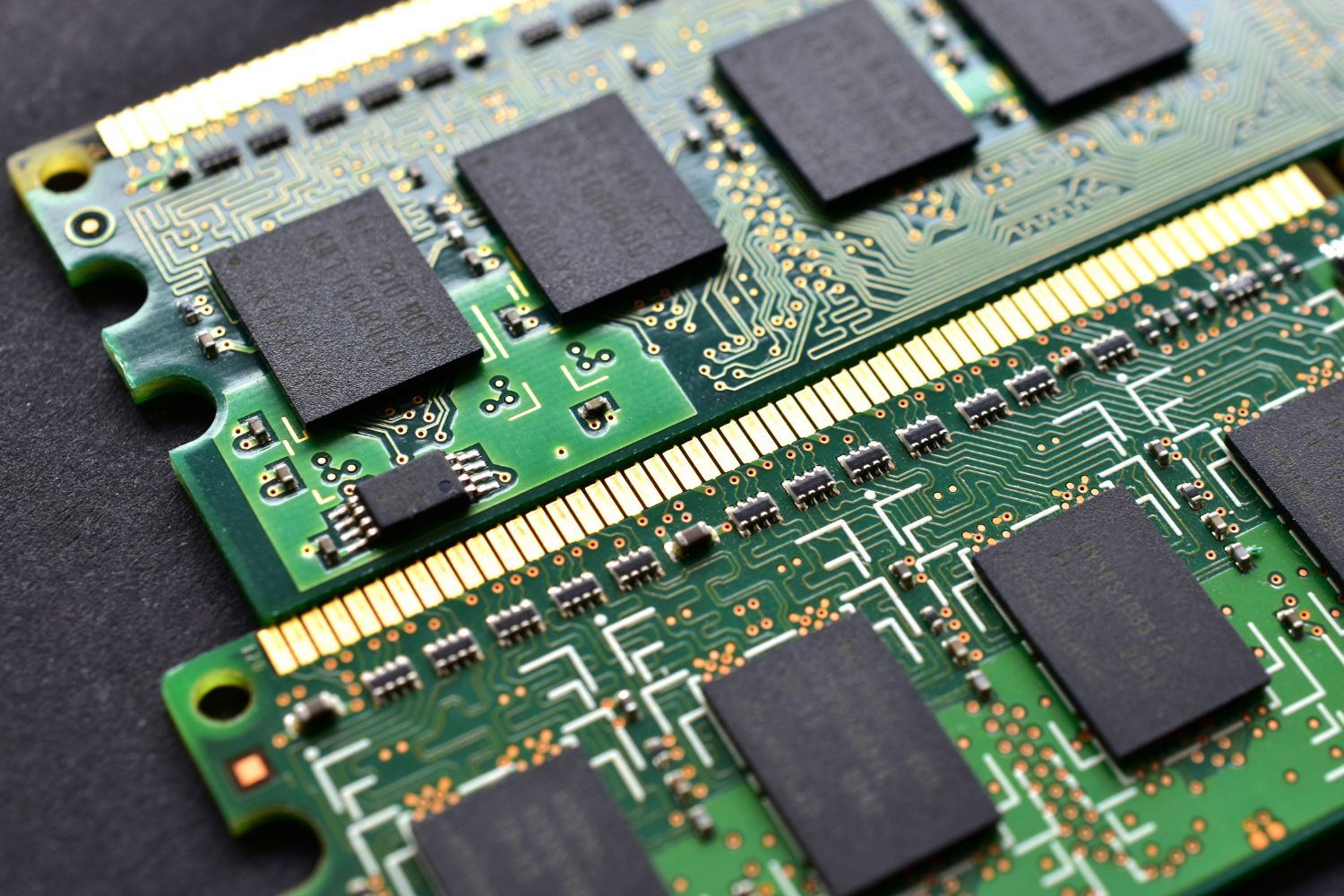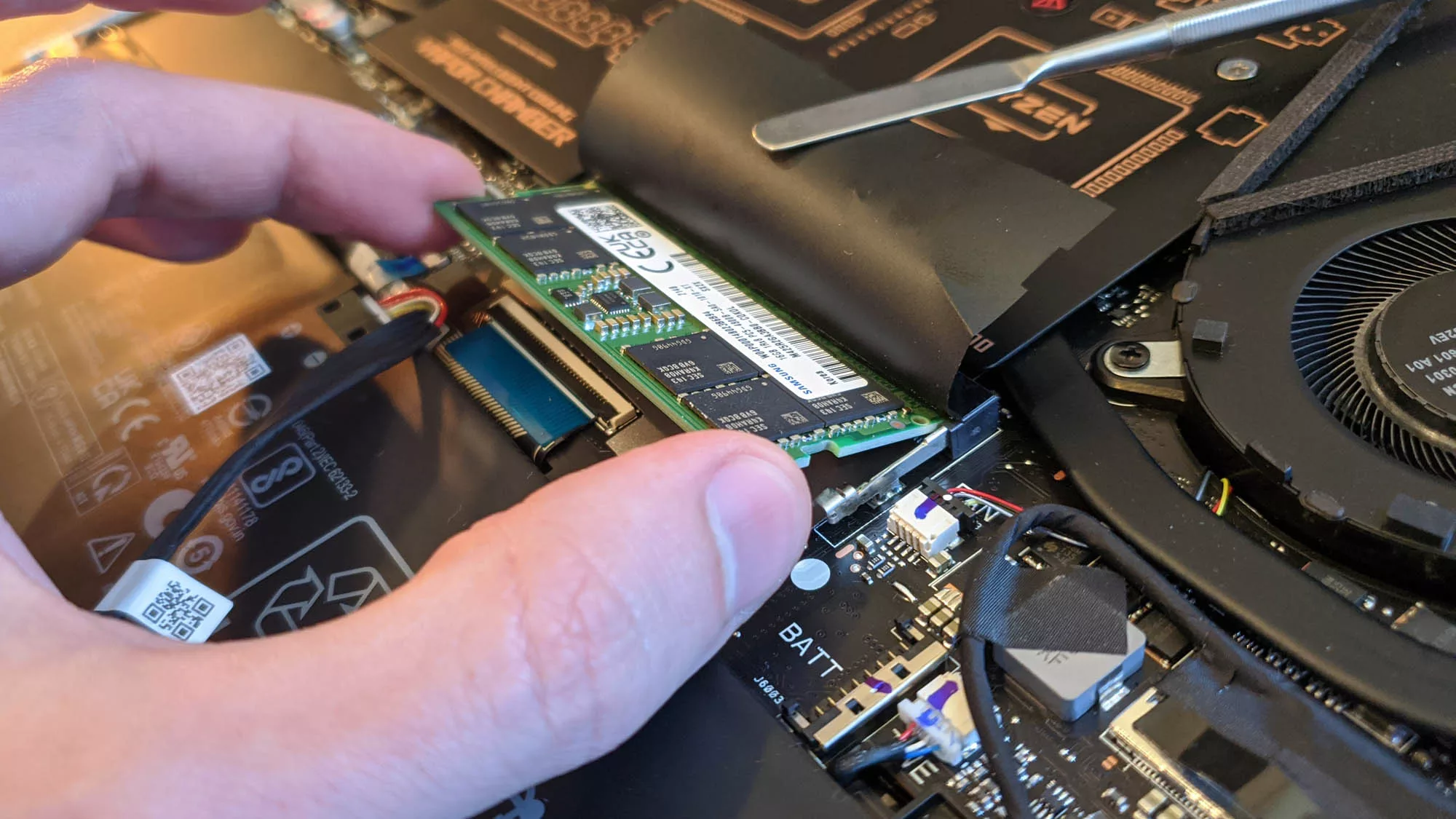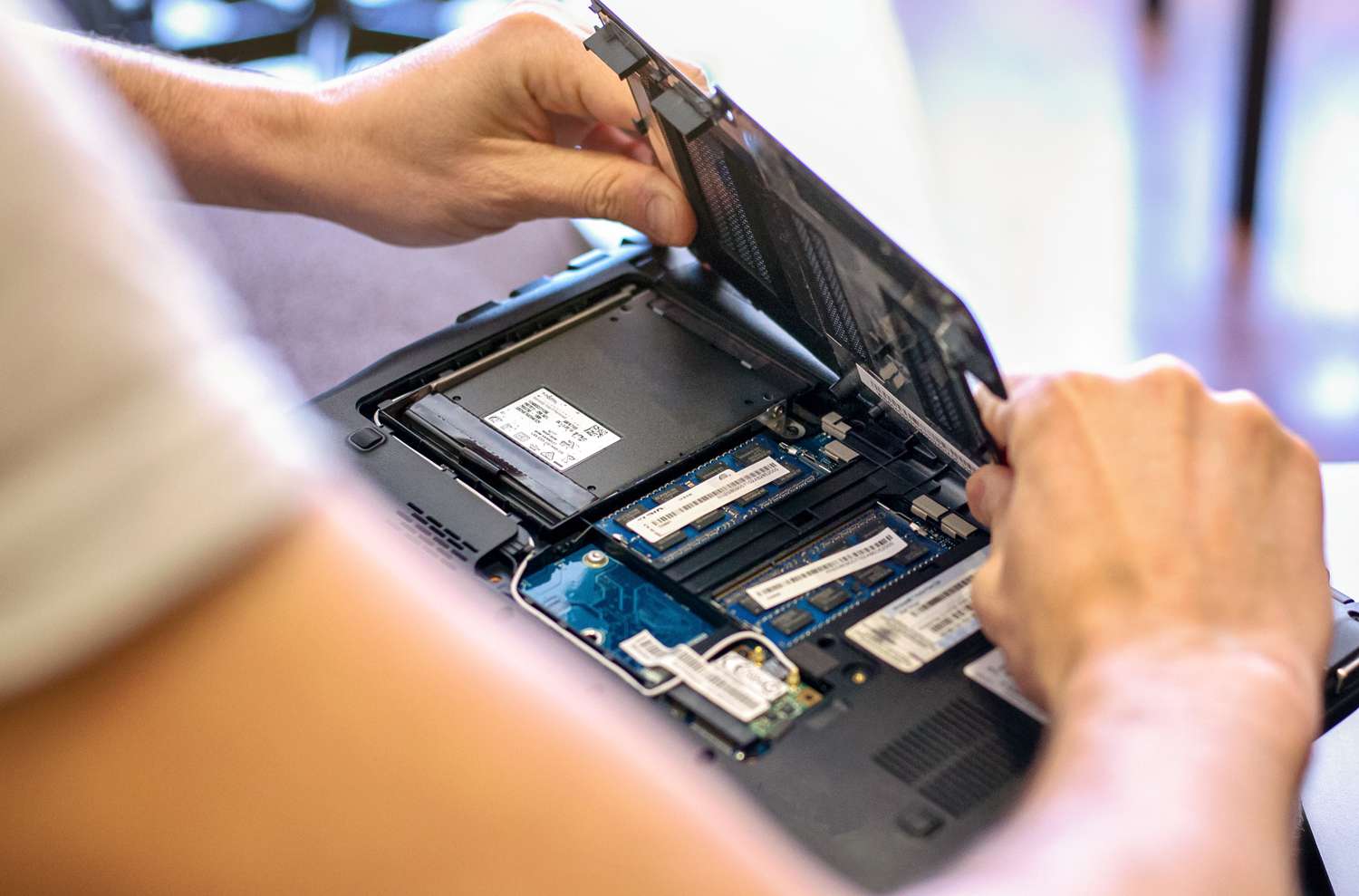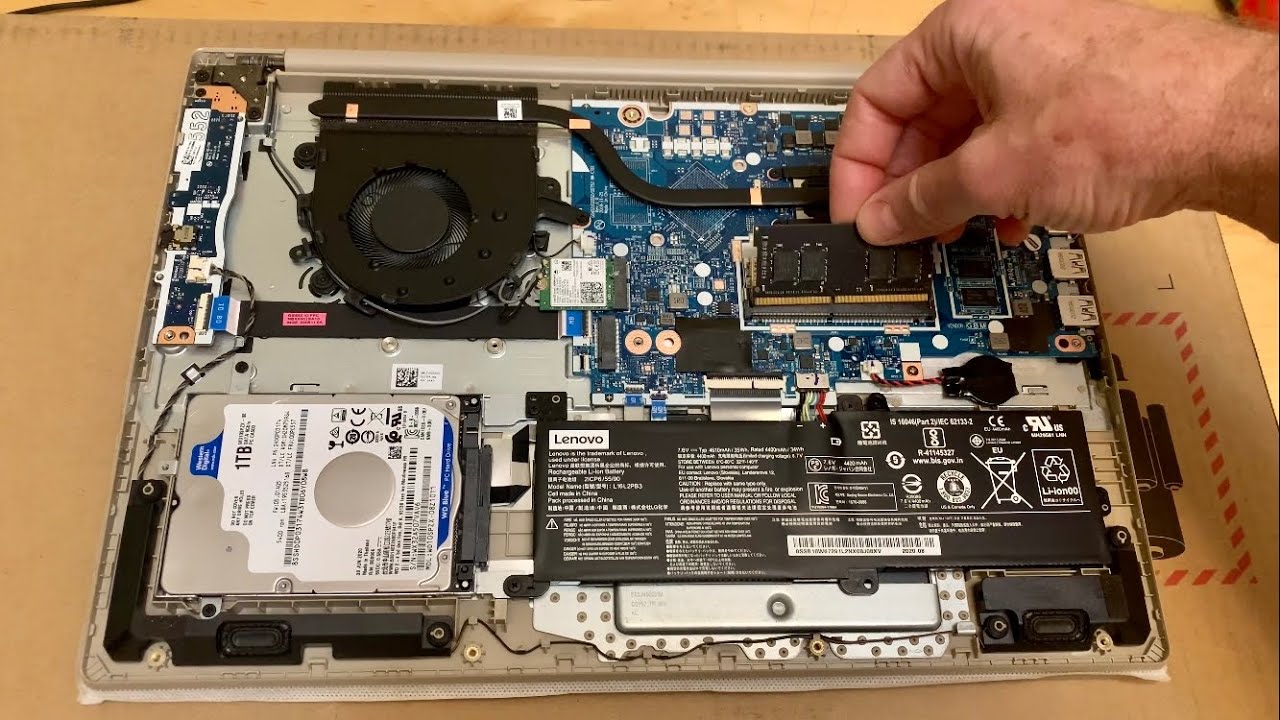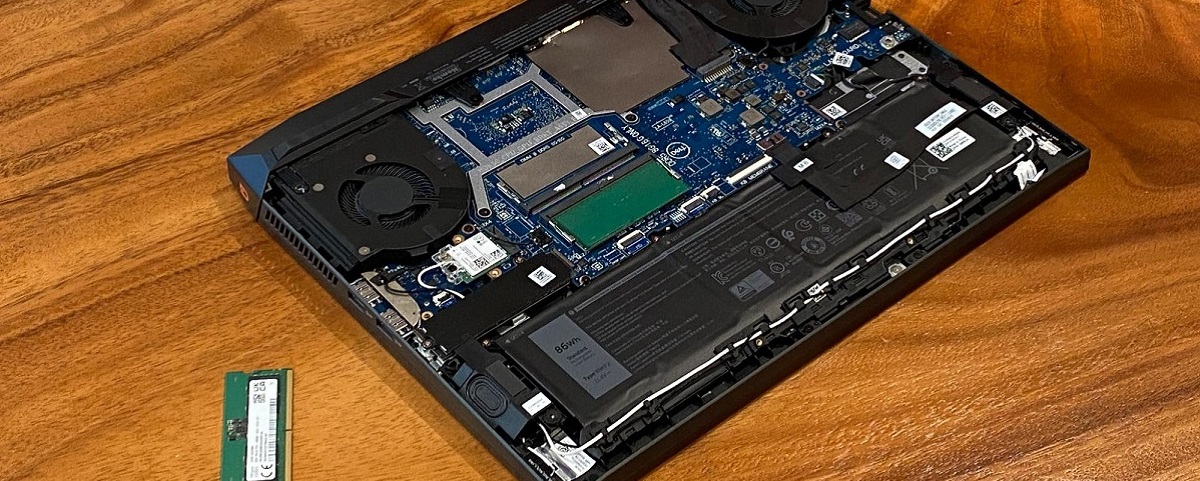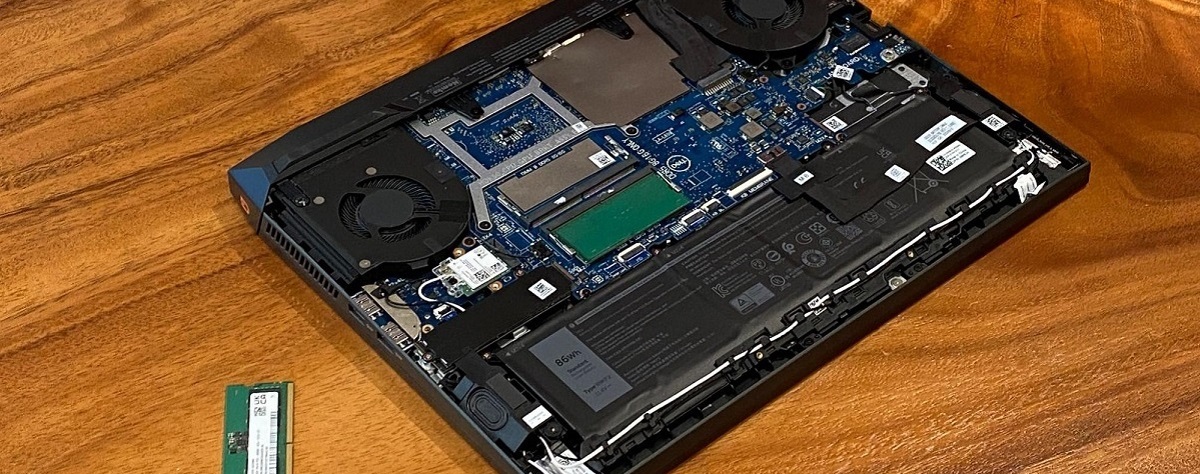Introduction:
Have you ever wondered how much RAM your laptop can handle? Determining the maximum RAM capacity of your laptop is crucial when considering an upgrade or optimizing its performance. RAM, short for Random Access Memory, plays a vital role in the overall speed and efficiency of your device. By increasing your laptop’s RAM capacity, you can multitask more efficiently, run memory-intensive applications smoothly, and enhance your overall computing experience.
In this article, we will explore various methods to find out the maximum RAM capacity supported by your laptop. Whether you are a tech enthusiast or a casual user, understanding your laptop’s RAM limitations can help you make informed decisions about future upgrades and ensure compatibility with new RAM modules.
Before we dive into the methods, it’s important to note that the maximum RAM capacity is mainly determined by your laptop’s hardware specifications, such as motherboard chipset and BIOS settings. It’s essential to consult your laptop manufacturer’s guidelines and documentation for accurate information about your device’s RAM capabilities.
Now, let’s explore some practical steps and tools you can use to discover the maximum RAM capacity for your laptop.
Checking the Laptop Specifications:
The first step in finding out the maximum RAM capacity for your laptop is to check the device’s specifications. These specifications typically include details about the supported RAM types and capacities. Here’s how you can access this information:
- 1. System Settings: On your laptop, go to the “Settings” or “System” menu. Look for an option that provides information about your device’s specifications. It may be labeled as “About,” “System Information,” or something similar. Once you locate this option, navigate to the hardware or components section to find details about the RAM.
- 2. Device Documentation: If you have the user manual or documentation that came with your laptop, refer to it for information about the RAM specifications. Look for sections that discuss memory upgrades or hardware specifications. The manual should provide details on the supported RAM types, capacities, and instructions on how to install or upgrade the memory modules.
- 3. Manufacturer’s Website: Visit the official website of your laptop’s manufacturer and search for your laptop model or product page. Browse through the specifications or technical details section to find information about the maximum RAM capacity. Manufacturers often provide detailed documentation and support resources that can help you determine the RAM limitations of your specific laptop model.
Remember that the location and terminology for accessing the specifications may vary depending on the laptop’s manufacturer and operating system. If you encounter any difficulties in finding the required information, consult the manufacturer’s support forums or contact their customer support for assistance.
By checking the laptop specifications, you can gather valuable information about the maximum RAM capacity supported by your device. This will serve as a foundation for further exploration and ensure compatibility when upgrading your laptop’s memory.
Using the Manufacturer’s Website:
One of the most reliable sources of information about your laptop’s maximum RAM capacity is the manufacturer’s official website. Laptop manufacturers often provide detailed specifications and resources for each laptop model they produce. Here’s how you can find the maximum RAM capacity using the manufacturer’s website:
- 1. Identify the Laptop Model: Look for the exact model number of your laptop. You can usually find this information on a sticker located on the bottom of the laptop or in the system settings. Make a note of the model number as you will need it to search for specific details.
- 2. Visit the Manufacturer’s Website: Go to the official website of your laptop’s manufacturer. Look for a support or product page where you can access detailed information about your laptop model.
- 3. Search for Your Laptop Model: On the manufacturer’s website, search for your laptop model using the model number you identified earlier. This will redirect you to the specific product page dedicated to your laptop.
- 4. Access the Specifications or Technical Details: On the product page, navigate to the specifications or technical details section. Here, you will find comprehensive information about your laptop’s hardware components, including the maximum RAM capacity supported by your device. Look for details such as the maximum RAM capacity, RAM type (DDR3, DDR4, etc.), and the number of memory slots available for expansion.
- 5. Check User Manuals or Guides: Some manufacturers provide user manuals or guides on their website. These documents can be valuable resources for understanding the RAM upgrade process and any limitations specific to your laptop model. Look for sections that discuss memory upgrades or hardware specifications.
By using the manufacturer’s website, you can access reliable and accurate information about your laptop’s maximum RAM capacity. This method ensures that you have the most up-to-date details specific to your laptop model, helping you make informed decisions about upgrading your laptop’s memory.
Checking the Laptop’s User Manual:
Another reliable source of information to determine the maximum RAM capacity of your laptop is the user manual or documentation that came with the device. The user manual provides detailed instructions and specifications for your specific laptop model. Here’s how you can check the user manual:
- 1. Locate the User Manual: Find the user manual or documentation that came with your laptop. The manual is usually included in the packaging or can be downloaded from the manufacturer’s website if it’s not physically provided.
- 2. Access the Memory Upgrade Section: Look for sections or chapters in the user manual that discuss memory upgrades or hardware specifications. The manual will provide detailed instructions on how to install or upgrade the RAM along with information about the maximum RAM capacity supported.
- 3. Verify the Supported RAM Types: Alongside the maximum RAM capacity, the user manual may also specify the supported RAM types (DDR3, DDR4, etc.). Make sure to note any specific requirements to ensure compatibility when upgrading.
- 4. Check for Additional Resources: Some user manuals may include additional resources such as guides or troubleshooting sections that provide further information about memory upgrades or limitations. Explore these resources to gain a deeper understanding of your laptop’s RAM capabilities.
- 5. Online User Manuals: If you don’t have a physical copy of the user manual, you can often find online versions on the manufacturer’s website. Search for your laptop model’s user manual on the support or downloads page provided by the manufacturer.
By checking the laptop’s user manual, you can find accurate and specific information about the maximum RAM capacity supported by your laptop model. It is recommended to consult the user manual alongside other methods to ensure you have a comprehensive understanding of your laptop’s RAM limitations before making any upgrade decisions.
Using System Information Tool in Windows:
In Windows, you can use the System Information tool to quickly access detailed information about your laptop’s hardware components, including the maximum RAM capacity. Here’s how you can do it:
- 1. Open the System Information Tool: Press the Windows key + R to open the Run dialog box. Type “msinfo32” and press Enter. This will open the System Information window.
- 2. Locate the Installed Physical Memory: In the System Information window, navigate to the “System Summary” section. Look for the “Installed Physical Memory (RAM)” entry. This will display the current amount of RAM installed in your laptop.
- 3. View the Maximum Supported Memory: In the same “System Summary” section, locate the “System Manufacturer” and “System Model” entries. Note down these details.
- 4. Research the Laptop Model: Using the laptop’s manufacturer and model information you obtained in the previous step, research online or visit the manufacturer’s website to find the maximum supported RAM capacity for your laptop model. The official documentation or support resources will provide the accurate information you are looking for.
- 5. Verify BIOS Compatibility: Keep in mind that the maximum RAM capacity supported by your laptop is also dependent on the laptop’s BIOS version and settings. While accessing the BIOS may vary for different laptop models, you can usually enter the BIOS by pressing a specific key (such as F2, F10, or Del) during the startup process. In the BIOS settings, look for options related to memory or system configuration to check if the current BIOS version supports higher RAM capacities.
By using the System Information tool in Windows, you can quickly access basic information about your laptop’s installed RAM and gather details about the maximum supported RAM capacity specific to your laptop model. However, it’s essential to cross-reference this information with the official manufacturer’s documentation to ensure accuracy and compatibility.
Using Activity Monitor in macOS:
In macOS, the Activity Monitor tool provides valuable insights into various system resources, including the amount of RAM installed in your laptop. You can use the Activity Monitor to gather information about your laptop’s RAM capacity. Here’s how you can do it:
- 1. Open Activity Monitor: Go to the “Applications” folder and open the “Utilities” folder. Locate and open the “Activity Monitor” application.
- 2. Navigate to the Memory Tab: In the Activity Monitor window, click on the “Memory” tab. This will display detailed information about the memory usage on your laptop.
- 3. View Installed Memory: On the Memory tab, you will find the “Memory Pressure” section at the top. Below that, you can see the “Memory Used” and “Memory Available” values, indicating the current utilization of your RAM.
- 4. Research the Laptop Model: Take note of the laptop’s manufacturer and model information. Research online or visit the manufacturer’s website to find the maximum supported RAM capacity for your laptop model. Official documentation or support resources will provide accurate information about your laptop’s RAM limitations.
- 5. Verify Firmware Compatibility: Keep in mind that the maximum RAM capacity supported by your laptop also relies on the firmware or EFI (Extensible Firmware Interface) version. Updating the firmware to the latest available version can sometimes expand the supported RAM capacity. Check the manufacturer’s website for firmware updates, and ensure that your laptop’s firmware is compatible with higher RAM capacities.
Using the Activity Monitor in macOS, you can quickly access information about the current amount of RAM installed in your laptop. However, to determine the maximum supported RAM capacity, it is crucial to consult the manufacturer’s documentation and support resources for accurate and reliable information specific to your laptop model.
Using Command Prompt in Windows:
In Windows, you can utilize the Command Prompt utility to retrieve information about your laptop’s RAM capacity. The Command Prompt provides access to various system commands, including those that display hardware details. Here’s how you can use the Command Prompt to find the maximum RAM capacity:
- 1. Open Command Prompt: Press the Windows key, type “cmd,” and press Enter. This will open the Command Prompt window.
- 2. Enter the System Information Command: In the Command Prompt, type “wmic computersystem get TotalPhysicalMemory” (without quotes) and press Enter. This command retrieves the total physical memory installed in your laptop.
- 3. Convert the Memory Value: The command will display the total physical memory value in bytes. Divide the value by 1,073,741,824 to convert it into gigabytes. This will give you the current RAM capacity of your laptop.
- 4. Research the Laptop Model: Note down the laptop’s manufacturer and model information. Research online or visit the manufacturer’s website to find the maximum supported RAM capacity for your laptop model. Official documentation or support resources will provide accurate details about your laptop’s RAM limitations.
- 5. Check BIOS Settings: Keep in mind that the maximum RAM capacity supported by your laptop may also be influenced by the BIOS settings. Access the BIOS by restarting your laptop and pressing a specific key (such as F2, F10, or Del) during the startup process. In the BIOS settings, navigate to the system configuration or memory settings to check if there are any limitations or options for higher RAM capacities.
Using the Command Prompt in Windows, you can quickly retrieve the current RAM capacity of your laptop. However, it is crucial to verify the maximum supported RAM capacity by referring to the manufacturer’s documentation and support resources to ensure accuracy and compatibility.
Using Terminal in macOS:
In macOS, you can utilize the Terminal application to access system commands and gather information about your laptop’s RAM capacity. The Terminal allows you to execute commands that provide detailed hardware and system specifications. Here’s how you can use Terminal to find the maximum RAM capacity:
- 1. Open Terminal: Go to the “Applications” folder, open the “Utilities” folder, and then launch the “Terminal” application.
- 2. Enter the System Profiler Command: In the Terminal window, type “system_profiler SPHardwareDataType” (without quotes) and press Enter. This command retrieves detailed hardware information about your laptop.
- 3. Locate the Memory Section: Look for the section labeled “Memory” in the command output. This section provides information about the current RAM configuration, including the installed memory modules and their specifications.
- 4. Research the Laptop Model: Make a note of your laptop’s manufacturer and model information. Research online or visit the manufacturer’s website to find the maximum supported RAM capacity for your laptop model. Official documentation or support resources will provide accurate details about your laptop’s RAM limitations.
- 5. Verify Firmware Compatibility: Keep in mind that the maximum RAM capacity supported by your laptop can also rely on the firmware or EFI (Extensible Firmware Interface) version. Check the manufacturer’s website for firmware updates and ensure that your laptop’s firmware is compatible with higher RAM capacities.
Using the Terminal application in macOS, you can access detailed information about your laptop’s hardware configuration, including the current RAM capacity. However, to determine the maximum supported RAM capacity, it is essential to consult the manufacturer’s documentation and support resources for accurate and reliable information specific to your laptop model.
Using Third-Party Software:
In addition to the built-in tools and methods, you can also rely on third-party software to determine the maximum RAM capacity of your laptop. These software applications provide detailed information about your system’s hardware components and can be a convenient option. Here’s how you can use third-party software:
- 1. Research Trusted Software: Look for reputable and trusted third-party software that specializes in system information and hardware analysis. Some popular options include CPU-Z, Speccy, HWiNFO, and AIDA64. Visit the software developer’s website to download the application.
- 2. Install and Launch the Software: Follow the instructions provided by the software developer to install and launch the application on your laptop.
- 3. Access Hardware Information: Once the software is launched, navigate to the section or tab that provides information about your laptop’s memory or RAM. This section will typically include details such as the current RAM configuration, maximum supported capacity, and any other relevant specifications.
- 4. Review the Maximum RAM Capacity: Take note of the maximum RAM capacity provided by the software. This information will help you determine the upgrade options available for your laptop.
- 5. Cross-Reference with Manufacturer Information: While third-party software can be helpful, it is always recommended to cross-reference the maximum RAM capacity with the official documentation and support resources provided by your laptop’s manufacturer. This ensures accuracy and compatibility.
Using third-party software can provide a streamlined and user-friendly experience when determining the maximum RAM capacity of your laptop. However, it is crucial to choose reputable software and verify the information provided by cross-referencing it with the manufacturer’s documentation and support resources.
Checking the Laptop’s Motherboard:
Another approach to find out the maximum RAM capacity for your laptop is to check the motherboard specifications. The motherboard is the main circuit board that houses various components, including the RAM slots. By examining the motherboard details, you can determine the maximum RAM capacity supported by your laptop. Here’s how you can check the laptop’s motherboard:
- 1. Power off and Unplug: Power off your laptop and unplug it from the power source to ensure safety while inspecting the internal components.
- 2. Remove the Bottom Panel: Depending on your laptop model, you may need to remove the bottom panel to access the internals. Consult the user manual or manufacturer’s website for specific instructions on removing the panel.
- 3. Locate the RAM Slots: Once the bottom panel is removed, locate the RAM slots on the motherboard. They are typically rectangular slots where the memory modules are inserted. There may be one or more RAM slots.
- 4. Identify the Motherboard Model: Look for the motherboard’s model number on the board itself. It is usually printed or labeled near the RAM slots or around the center area of the motherboard. Make a note of the model number.
- 5. Research the Motherboard Specifications: Use the motherboard model number to research online or visit the manufacturer’s website in order to access the specifications and documentation specific to the motherboard. Look for details about the maximum RAM capacity supported by the motherboard, the type of RAM supported (DDR3, DDR4, etc.), and the number of memory slots available for expansion.
- 6. Consult the Manufacturer: If you are unable to find the motherboard specifications online, you can reach out to the laptop’s manufacturer for assistance. Contact their customer support or visit their support forums for additional information about the motherboard and its RAM capabilities.
By checking the laptop’s motherboard, you can gather valuable information about the maximum RAM capacity supported by your device. This method provides direct insight into the hardware limitations and helps you determine the best upgrade options for your laptop’s memory.
Conclusion:
Discovering the maximum RAM capacity for your laptop is essential for optimizing its performance and considering future upgrades. By exploring various methods, you can easily determine the RAM limitations of your laptop and make informed decisions regarding memory upgrades.
Checking the laptop specifications, using the manufacturer’s website, and consulting the user manual are reliable ways to gather information about the maximum supported RAM capacity. These sources provide accurate details specific to your laptop model and ensure compatibility with new RAM modules.
In addition, utilizing system information tools such as the System Information tool in Windows or the Activity Monitor in macOS offers a convenient way to access comprehensive information about your laptop’s RAM capacity. These tools display detailed hardware specifications and help you gauge the current memory usage of your laptop.
For more advanced users, utilizing the Command Prompt in Windows or the Terminal in macOS allows direct access to system commands, providing you with specific details about your laptop’s RAM capacity. This enables you to verify information from other sources and check BIOS or firmware compatibility for potential upgrades.
Lastly, third-party software can streamline the process of determining the maximum RAM capacity by providing detailed information about your laptop’s hardware components. However, it is crucial to choose reputable software and cross-reference the information obtained with the official documentation and support resources provided by the laptop’s manufacturer.
Remember, accurate knowledge about your laptop’s maximum RAM capacity enables you to make informed decisions regarding memory upgrades, ensuring optimal performance and compatibility with your specific device. By utilizing the various methods discussed in this article, you can confidently explore and exploit the full potential of your laptop’s RAM capabilities.







